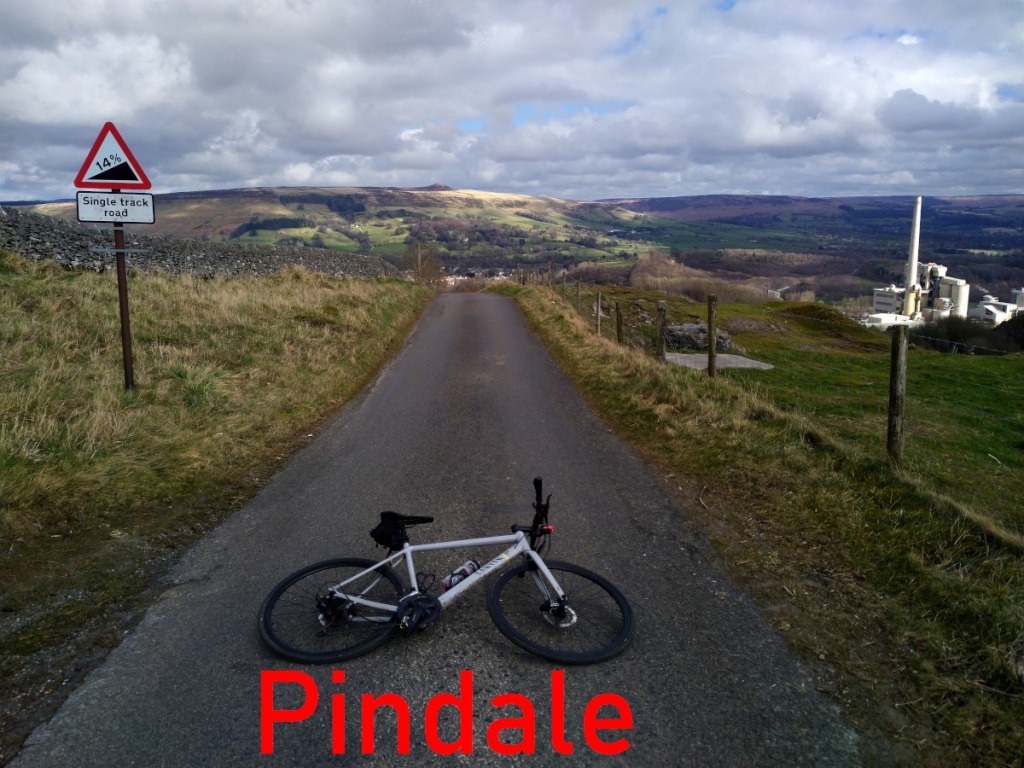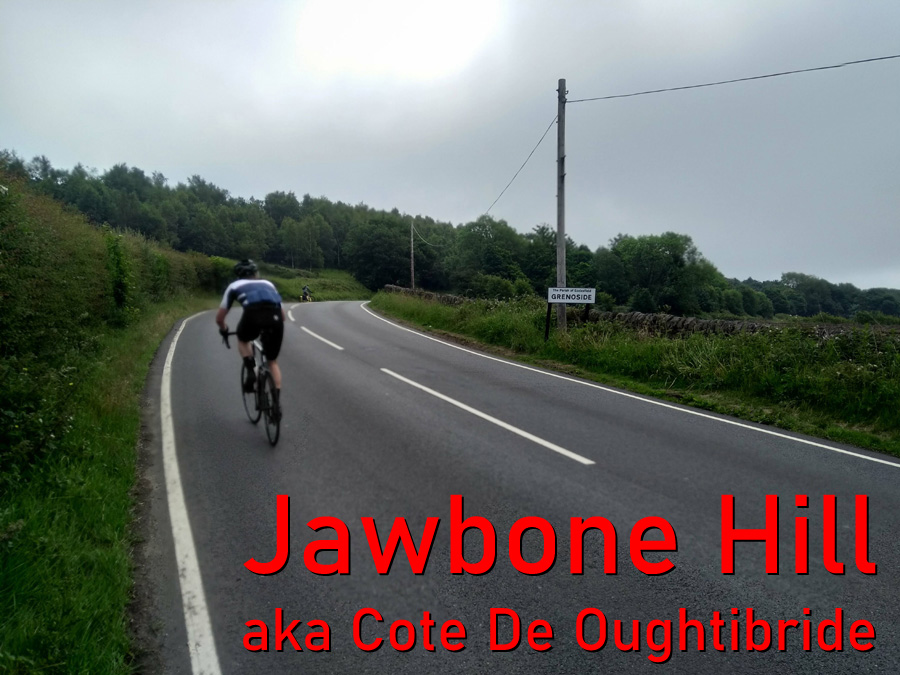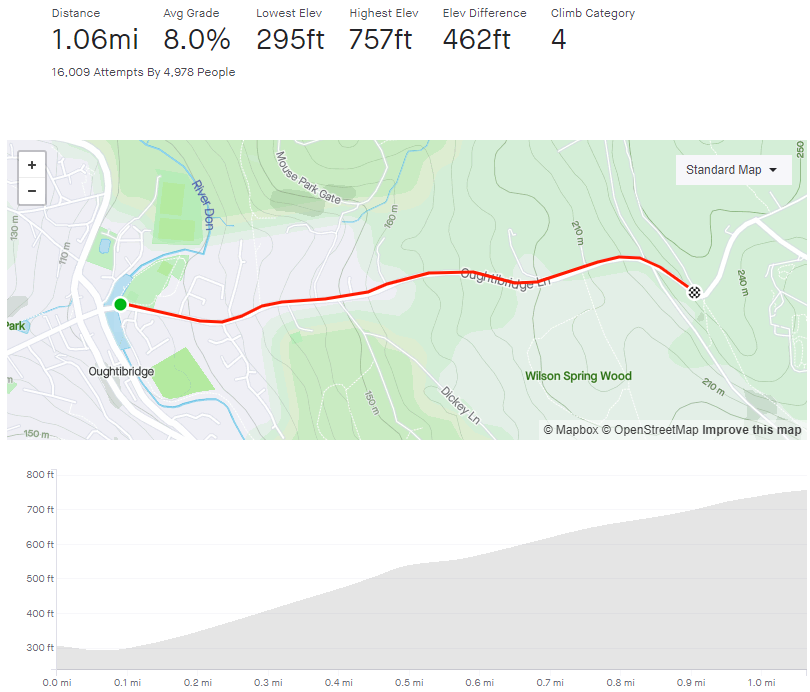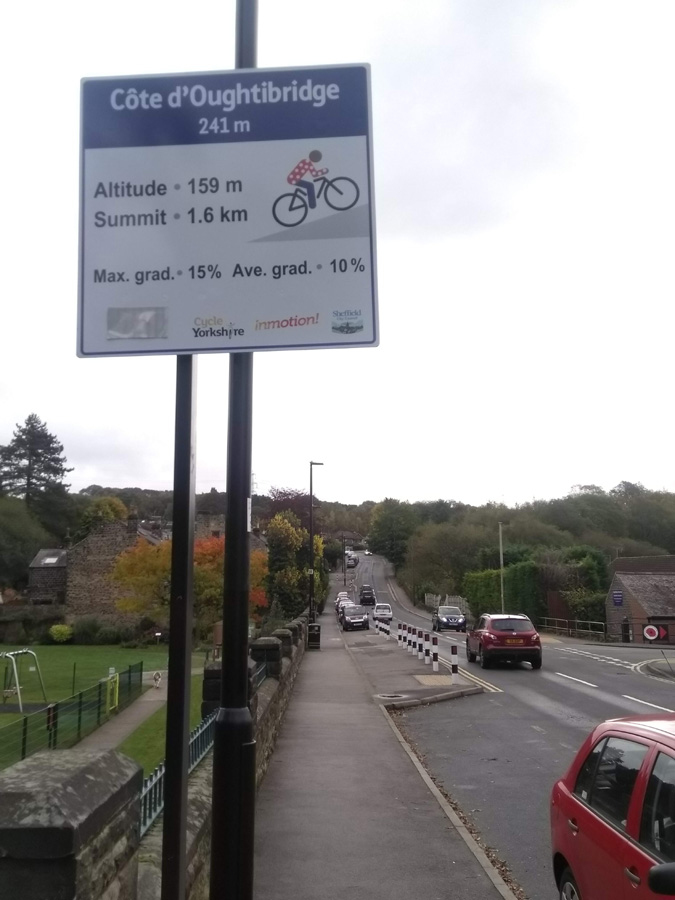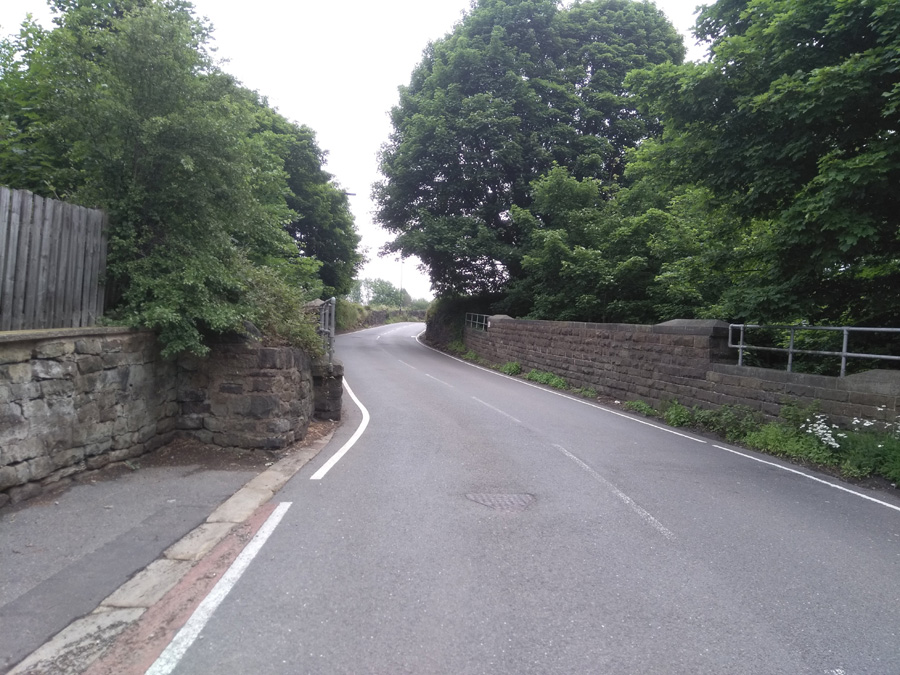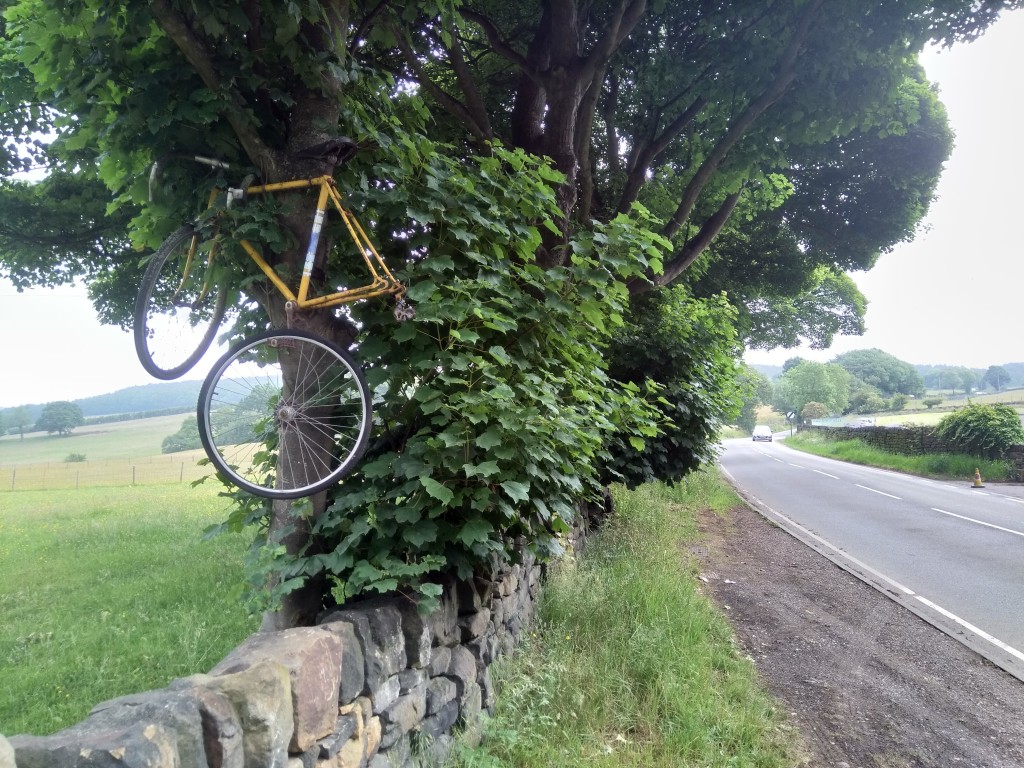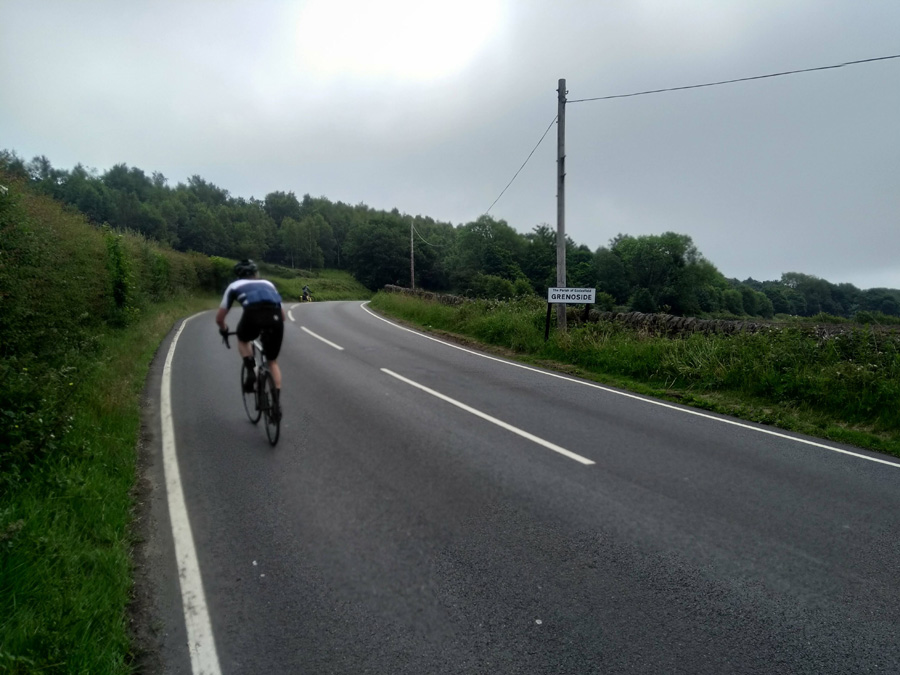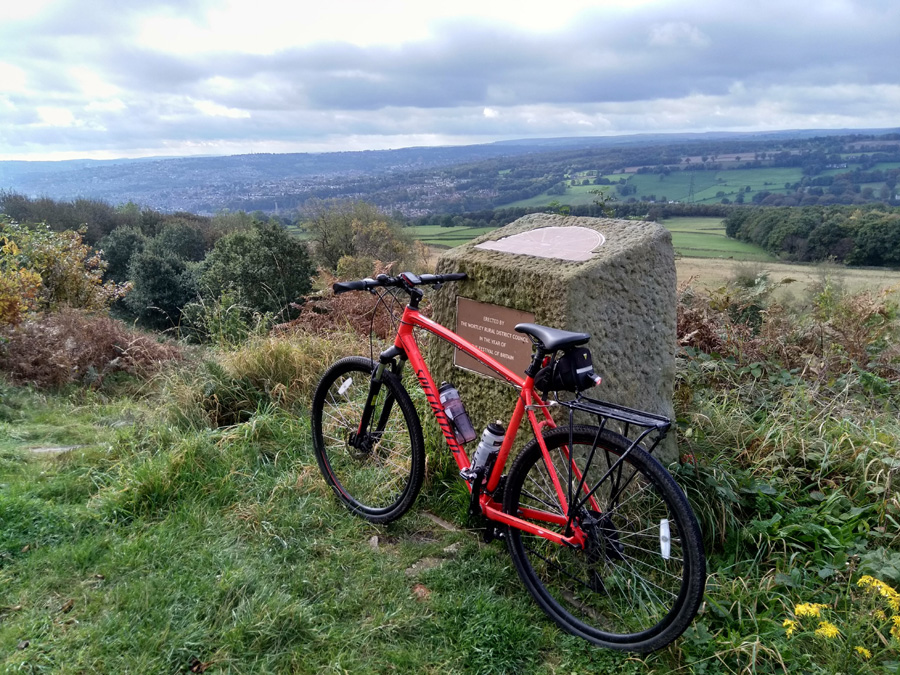- The Thunderpit
- Length: 0.39 miles
- Avg gradient: 12.5%
- Peak gradient: 19.5%
- Difficulty: 3/5
- Likelihood of encountering unpleasant motor-vehicles: 1/5
- Elevation gain: 258ft
- Strava

A quiet lane with a surprise at the top.

Full disclosure: the road is actually called Farnsley Lane but at the top you reach the far more dramatic sounding Thunderpit Lane. Also, credit to The Digital Cyclist, whose website led me to this hill.

Keep you eyes peeled for the entrance to Farnsley Lane as it’s a blink and you’ll miss it turning but it will feel like a blessing after cycling along the horrible A623. No rest for the wicked though as you’re immediately into double figures, that steadily grow, as the road bends to right and you’re faced with a steady, slightly-wiggly, straight (is that an oxymoron?) up the hill.

The bend is the steepest section of the road, adding to the challenge of the slightly poor surface that is probably also covered in debris. The consolation you can take from the amount of detritus on the road is that it does suggest that motor vehicles are a rare sight up here.
There is not much to see as you’re enclosed by trees on either side but you should feel the gradient drop off slightly as you progress upwards, dropping to single figures as the road gently bends left.

The final 150m of the hill holds a steady 7.5% and, once you crest the hill, you’ll find yourself in the unexpected surroundings of the British Flurospar industrial mine. Don’t worry, it’s a public road so, despite feeling like a trespasser, you’re not breaking any rules cycling through here.

Please note, I’ve only ever been here on a Sunday when it was dead quiet. I suppose there is a real possibility that it might be quite busy with industrial machinery and lorries on a weekday.
Enjoy this? ❤ Support the site!





